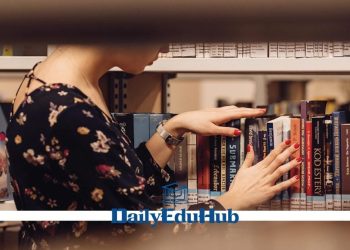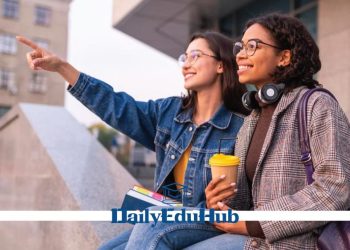In contemporary education, building meaningful relationships in schools has emerged as a crucial pillar for academic success and student well-being. Teacher training plays a crucial role in this context, equipping teachers with the skills and knowledge necessary to foster inclusive and supportive learning environments.
The importance of these links, based on mutual support and understanding, highlights the need to focus on teacher professional development as a means to improve educational dynamics. Undoubtedly, adequate teacher training not only contributes to teacher satisfaction and retention but also significantly boosts the educational experience of students.
The development and strengthening of interpersonal skills through teacher training is seen as key to overcoming obstacles and optimizing teaching. Teacher training and professional development can serve as a foundation for building strong and cohesive educational communities.
Common challenges in building relationships in the educational field
In the educational field, one of the main challenges faced by teachers is overcoming communication barriers. These barriers can manifest themselves in various ways, both inside and outside the classroom, affecting the effective transmission of information between teachers and students. For example, errors in the way of speaking, poor choice of words, or lack of understanding of the objective of communication are just some examples of how educational processes can be hindered. In addition, physical situations or psychological disorders of the sender or receiver can also play a crucial role in communicative effectiveness.
Another significant aspect of building effective relationships is the influence of cultural differences. Cultural and linguistic diversity in classrooms presents both challenges and opportunities for teacher training. A teacher must be prepared to adapt his or her communication in a way that is sensitive and respectful of these differences, which is crucial to avoiding misunderstandings and fostering an inclusive environment. In situations such as a classroom debate, cultural differences may lead some students to refrain from expressing their opinions, limiting the diversity of perspectives and making the discussion less enriching.
Furthermore, the generation gap between teachers and students can be a source of misunderstandings and conflicts, which requires flexible adaptation of communication styles to address and understand youth culture. Diversifying communication techniques to accommodate different learning styles is essential to improve the effectiveness of classroom communication.
These challenges underline the importance of continuing teacher training that not only focuses on the acquisition of knowledge but also on the development of interpersonal and communication skills adapted to the diversity and complexity of today’s educational environment.
Conflict resolution techniques
Mediation and negotiation in the educational context are presented as essential tools for conflict resolution. Various authors have highlighted the importance of these methods in eliminating factors that cause violence in schools. Collaborative negotiation, in particular, promotes mutually satisfactory solutions, improving communication and relegating personal interests to the background. On the other hand, mediation involves the presence of a neutral person who facilitates dialogue and understanding between the parties.
Student mediation, for example, empowers students to manage their conflicts with autonomy and responsibility. By taking on mediating roles, students not only resolve their own conflicts but also promote a harmonious school environment. In addition, parent involvement in conflict resolution provides valuable perspectives and fosters collaboration between schools and families, strengthening student support and safety.
Establishing open communication channels is essential for conflict resolution in the classroom. Encouraging the expression of ideas and feelings contributes to mutual understanding and allows potential conflicts to be identified early. Empathy and active listening are key skills in this process, as they allow a better understanding of the concerns and emotions of others, thus facilitating the search for effective and respectful solutions.
These strategies not only improve classroom coexistence but also prepare students to face challenges in a constructive and respectful manner.
Importance of continuing professional development and teacher training
Ongoing professional development is essential to staying current and competitive in the job market. Training in interpersonal skills, such as effective communication, teamwork, and leadership, is crucial to career success. Participating in seminars, workshops, and other professional development activities allows you to gain new knowledge, skills, and perspectives that can be applied on the job.
The development of interpersonal skills is essential in teacher training, as it provides the content and practices necessary for the acquisition of competencies in the development of social skills at an intrapersonal and interpersonal level. This training is crucial from early childhood to secondary education, being a cumulative process that significantly improves social interaction in educational contexts.
Attending educational seminars and workshops is an effective strategy for teachers to stay abreast of the latest trends and developments in the field of education. These events provide a platform to learn from experts and leaders in the field, allowing teachers to improve their pedagogical strategies and apply new knowledge in the classroom.
Continuing teacher training not only improves teaching skills and educational quality but also contributes to the personal and professional well-being of teachers, increasing their motivation and satisfaction in their roles.
Tools and resources to improve relationships
Information and communication technologies offer new possibilities for improving relationships within the educational field. Educational centers can access digital resources that streamline communication between teachers and students, allowing immediate consultations and the use of interactive tools such as chats and forums.
These digital tools are also essential for collaborative work, allowing tasks to be developed jointly and maintaining a constant connection during the educational process.
The use of messaging platforms, educational applications, and online forums has become an essential channel for maintaining constant and effective communication between teachers and students. Tools such as Dropbox facilitate file sharing and collaboration in real-time, while applications such as Kahoot offer dynamic learning methods through interactive games adapted to mobile devices.
The selection and use of educational materials must take into account the profile and needs of students, ensuring that the materials are accessible, clear, and appropriate for the educational context. These materials must promote the active participation of students in their learning process, being designed to be motivating and understandable, thus facilitating didactic communication.
In addition, the evaluation of resources such as educational software must take into account both pedagogical and technical criteria, to ensure their effectiveness in the teaching process.
These approaches not only improve the teaching and learning dynamics but also foster inclusive and supportive environments, essential for student well-being and success. Ongoing training in interpersonal skills and the adoption of innovative techniques in the educational field serve as pillars for the development of cohesive and harmonious school communities.
By equipping educators with the tools necessary to face and overcome current challenges, we are paving the way to a more inclusive, effective, and empathetic education. This collective effort not only benefits students but elevates the quality and impact of education in society, setting an example of progress and adaptability in the educational field.





